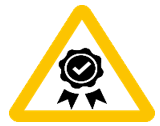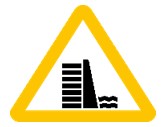Title Page
-
Site conducted
-
Conducted on
-
Prepared by
-
Additional persons:
-
Location
Risk Category Standard - Product Quality
Responsibilities
-
Who is the Risk Owner of this risk category?
-
Who is the Control Owner of the risk category?
-
Who is the Risk Executer of this risk category?
-
Who is the Task Executers of this risk category?
Competencies
-
Is the Risk Owner trained and competent to manage this risk category?
-
Is the Risk Control Owner trained and competent to manage this risk category?
-
Are the Risk Exacters trained and competent to manage this risk category?
-
Are the Task Executers trained and competent to manage this risk category?
Appointments
-
Is the Risk Owner appointed to conduct his/her duties? (WAH Planner, risk assessor.....)
-
Is the Risk Control Owner appointed to conduct his/her duties? (WAH Planner, risk assessor.....)
Risk Management Requirements
-
Enable and conduct the respective quality risk assessments for the task (IBRA, TBRA) to identify the risks and related precautions to be in place for the task.
-
Always adhere to the product quality specifications as well as the on time and in full (OTIF) requirements of suppliers and customers.
-
Determine critical control points in the process as per the quality plan to ensure good quality product and/or service.
-
Conduct qualitative and quantitative measurements of product and/or service quality. Conduct statistical analysis to determine variation present in each type of measurement — variation must be minimised, it is the enemy of quality.
-
Ensure a maintenance and calibration plan for all quality process equipment is in place. Calibration must be traceable to an International Standard.
-
Ensure material traceability is in place throughout the supply chain.
-
Ensure a waste management plan is in place. Minimise reworking and repurposing as far as possible.
-
Always refer and adhere to the site-specific product quality procedures, standards and work instructions.
-
Ensure trained and competent workers to perform product quality-related activities.
-
Adhere to product quality permits and requirements that are essential as per in-county legislation.
-
Collaborate with sales and/or marketing teams to understand customer requirements and satisfaction.
-
Where required, a service level agreement (SLA) should be in place between AECI and the approved supplier or customer.
-
Ensure all required product-related documentation is always available throughout all process stages, including warehousing and logistics.
-
Refer to the Process safety, Environment, People transportation (sales force) and Product transportation risk category standards where relevant.
Minimum Critical Controls
-
Check that all materials (raw and finished goods) are within specification, both pre and post manufacturing, and are always traceable.
-
Sample and measure the process quality parameters during the manufacturing process as per process requirements (manually or with online analysers).
-
Calibrate and maintain testing and process equipment as per process requirements.
-
Conduct product reworking or repurposing to manage waste. Take remedial action to minimise rework and waste.
-
Conduct product isolation or product recall for non-conforming products as required by the<br>product Quality Plan.













